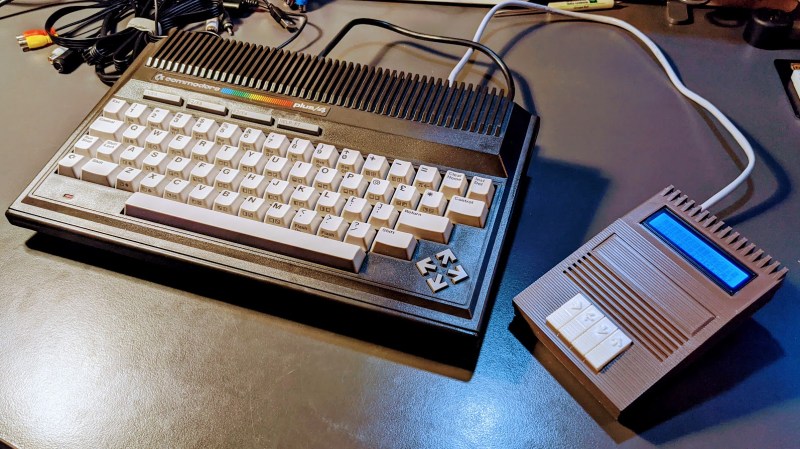Retro computer enthusiast [Steven Combs] documents his adventure building the TEDuino, a modern replacement for the Commodore Datasette which uses an SD card instead of audio tape. He based the design on [Peter Edwards]’s Tapuino project, which was featured by Hackaday back in 2014. [Steven] took the aesthetic design to a new level, and also modified it to work with his Plus/4 and other TED series Commodores. We are amazed that he was able to design this enclosure in SketchUp, and impressed with the results from his Creality Ender 3. He went to great lengths to match the color and style of the Plus/4, and pulled it off quite well. [Steven] also applied some interesting design features in this enclosure. The PCB modules are snap-fit, the buttons are made as a single piece – not unlike a living hinge. The 3D-printed strain relief for the cable is a nice finishing touch, and we cannot disagree with [Steven]’s sage advice – “Gorilla anything is just cool”.
This is only part 1 of the project. Stay tuned for future improvements, tweaks and embellishments.
















Fantastic work!
Thanks. You were the brains behind inside the case! Appreciate the great work you did on the development of the Tapuino software. Time permitting, I also hope to hack around with the software and customize it.
So I’m no super geek when it comes to this stuff but I do have an understanding of digital audio. If I understand correctly, this kind of gadget would keep cassettes stored as something like a .WAV or some other audio format. Maybe even MP3.
My question concerns the recording process. If you want to convert an old data cassette to an audio format you have to play it back and record it as a sound. Would it be better to use a square wave to record it rather than a some, triangle or sawtooth? I figure a square wave would be best since the “sound” you’d be recording is binary, 1s and 0s, ON/OFF and a that. A square wave would be more in tune (no pun instead) with that data stream.
Any thoughts?
From my understanding, the TAP file format is more complicated than that. The format compensates for incorrect/inconsistent motor speed and also small/long dropouts.